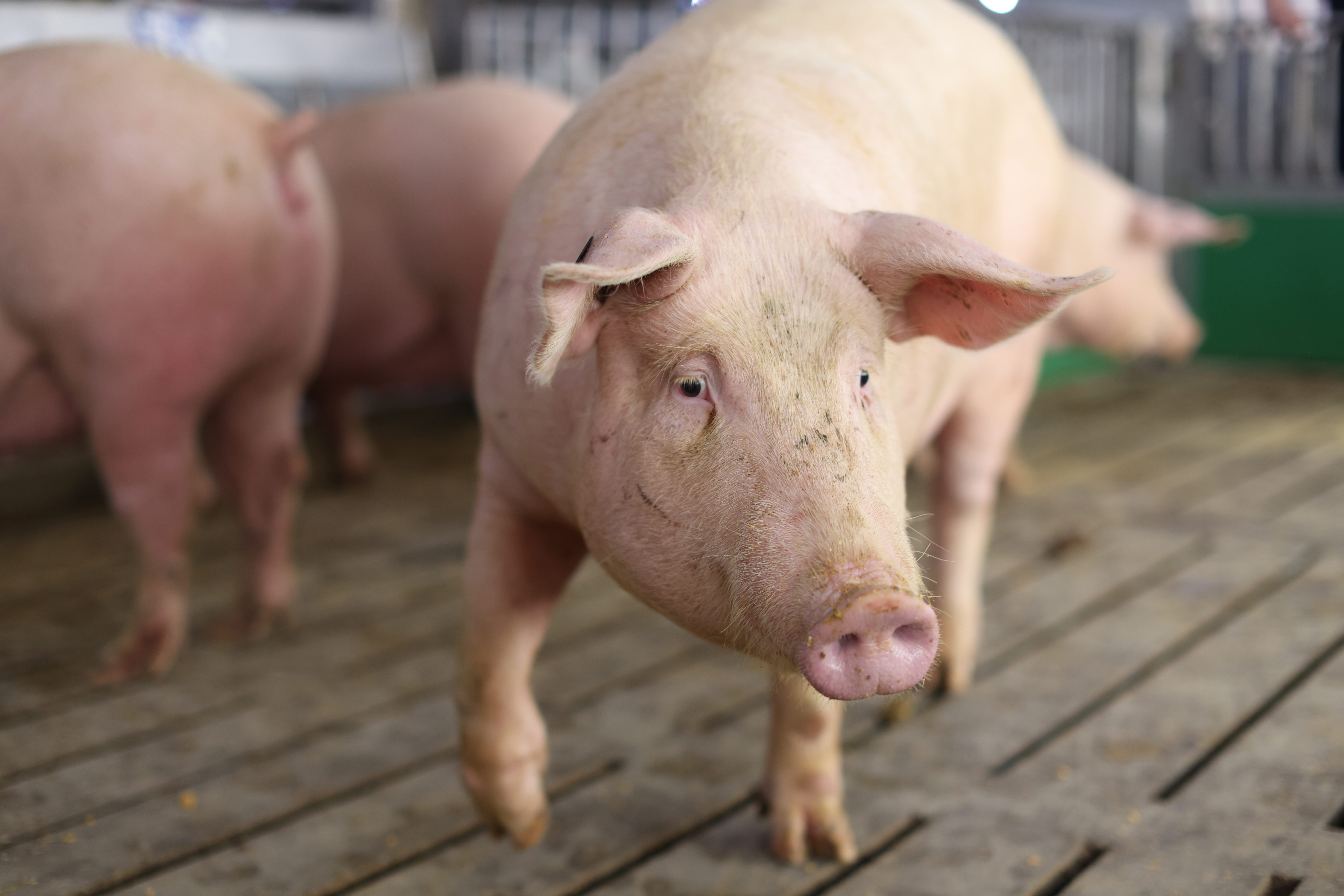A recent analysis performed by PigChamp revealed an average sow replacement rate of 53.55%. In many herds, the largest percentage of breeding female losses are found in gilts and young (first parity) sows. Finding the right balance between keeping the herd young enough, while still maintaining a significant number of sows between parities 3 to 5 in the system is an ongoing challenge. Sow longevity is complex and influenced by many factors. In this article you will learn how to optimize sow retention and longevity.
Sow Nutrition: A Key Investment in Gilt Development
The importance of gilt development in the sow’s lifetime contribution to the herd is often underestimated. Research has shown that pig producers need to start developing their replacement gilts as early as 40 pounds (18 kg) in order to maximize their lifetime potential and longevity within the herd. Addressing the gilt’s nutritional needs helps decrease feed costs — which account for 70% of a replacement gilt’s expense — while also contributing to her longevity within the herd. By slightly slowing a gilt’s growth rate and feeding correct levels of essential trace minerals including zinc, copper and manganese amino acid complexes like Availa® Sow, she is able to reach physiological maturity at 230 days and 300 pounds (135 kg) of body weight with an improved skeletal structure-to-weight balance.
Preventing Sow Lameness and Inflammation
Young sows are often culled due to feet and leg problems, which decrease reproductive performance and profitability. Herd records show lameness accounts for up to 15% of total culls through the first parity. Lameness and its stress on the sow also influence reproduction through longer wean-to-estrus intervals, more non-productive sow days, smaller litter size and fewer pigs weaned. While poor fertility often causes sows to exit the herd early, lameness also contributes to several factors that cause poor fertility. Foot lesions are commonly found on 15 to 40% of developing gilts. Inflammatory lesions cause pain and stress, directly impacting reproductive performance. Keeping a close eye on sow foot health is an important part in preventing lameness. What we find is that taking care of the feet with routine maintenance and trimming hooves in a breeding sow improves her performance. By working to decrease lameness in the sow herd, we can increase longevity and cause more sows to reach their economic potential.
Trace Minerals Key to Reproduction
Inflammation in pigs affects the partitioning of nutrients toward the immune system and away from production. It is better to prevent inflammatory conditions such as lameness and disease because they impact nutrient utilization and decrease reproductive efficiency. Recent records from five farms in Spain show that adding essential trace minerals zinc, manganese and copper amino acid complexes, such as Availa-Sow, to sow diets dramatically reduced the cull rate of gilts and young sows due to lameness and reproductive failure. At the outset, 42% of bred gilts were not reaching third parity. Within two years, that number had dropped to 23% — a 45% improvement in young-sow retention.
Sow Lactation and Litter Size
Another key to improving a gilt’s retention within the herd involves maintaining body weight during first lactation. By breeding gilts at 300 to 330 pounds (135 to 150 kg) of body weight on their second or third estrus, the gilt has the weight and maturity to gestate, lactate a litter of pigs and then rebreed. Gilts bred at less than 300 pounds (135 kg) had fewer total pigs over three parities than their heavier, more mature counterparts.
Sow Longevity Impacts Economic Success
Bringing mature, structurally sound gilts into the herd improves their chances of reaching fourth parity, the point at which these animals begin making money for the operation and realize their economic potential. In fact, data has shown that increasing the number of sows from parity 3 to 6 has a significant impact on the overall productivity of the herd. By investing in early gilt development, preventing lameness, incorporating performance trace minerals in sow nutrition plans, and maintaining body weight during the first lactation, we can optimize sow retention and longevity.
Learn more about performance trace minerals and their role in improving sow performance.

